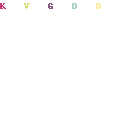Training on Sand versus Training on Grass (*study)
 Anyone who’s don their share of running on sand will already know that it’s more difficult than running on grass. But here at 3Fu3l, we question everything, and just because it’s harder, doesn’t mean it will produce better results. Running with added resistance isn’t as clearly defined as other modalities, as a little is often beneficial for practicing form and even for increasing workload, while too much can cause negative adaptive changes in technique that make the athlete less efficient, or often fail to carry over to race day.
Anyone who’s don their share of running on sand will already know that it’s more difficult than running on grass. But here at 3Fu3l, we question everything, and just because it’s harder, doesn’t mean it will produce better results. Running with added resistance isn’t as clearly defined as other modalities, as a little is often beneficial for practicing form and even for increasing workload, while too much can cause negative adaptive changes in technique that make the athlete less efficient, or often fail to carry over to race day.
Sprinting with parachutes comes to mind here, as a small one will allow form to be maintained, while something more reminiscent of the 101st Airborne would undoubtedly be a bad idea. So where does that leave us with running on grass versus sand? Well, for team sports athletes, it appears that training on sand for two hours/week can produce better results in VO2 max, than training on grass for an equivalent amount of time.
We see this with many of the world’s fittest players in a variety of team sports (Soccer, Rugby 7’s, etc…), where they will devote a portion of various training cycles to sand-based training. This type of training also has the added benefit of prehabbing your foot and ankle muscles, as there is no need for footwear (cleats, etc…), and this is likely to be the reason we see it included in micro- and mesocycles, early in the preseason for so many athletes.
J Sports Sci. 2014 Jan 30. [Epub ahead of print]
Effect of sand versus grass training surfaces during an 8-week pre-season conditioning programme in team sport athletes.
Binnie MJ, Dawson B, Arnot MA, Pinnington H, Landers G, Peeling P.
Abstract: This study compared the use of sand and grass training surfaces throughout an 8-week conditioning programme in well-trained female team sport athletes (n = 24). Performance testing was conducted pre- and post-training and included measures of leg strength and balance, vertical jump, agility, 20 m speed, repeat speed (8 × 20 m every 20 s), as well as running economy and maximal oxygen consumption (VO2max). Heart rate (HR), training load (rating of perceived exertion (RPE) × duration), movement patterns and perceptual measures were monitored throughout each training session. Participants completed 2 × 1 h conditioning sessions per week on sand (SAND) or grass (GRASS) surfaces, incorporating interval training, sprint and agility drills, and small-sided games. Results showed a significantly higher (P < 0.05) HR and training load in the SAND versus GRASS group throughout each week of training, plus some moderate effect sizes to suggest lower perceptual ratings of soreness and fatigue on SAND. Significantly greater (P < 0.05) improvements in VO2max were measured for SAND compared to GRASS. These results suggest that substituting sand for grass training surfaces throughout an 8-week conditioning programme can significantly increase the relative exercise intensity and training load, subsequently leading to superior improvements in aerobic fitness.


